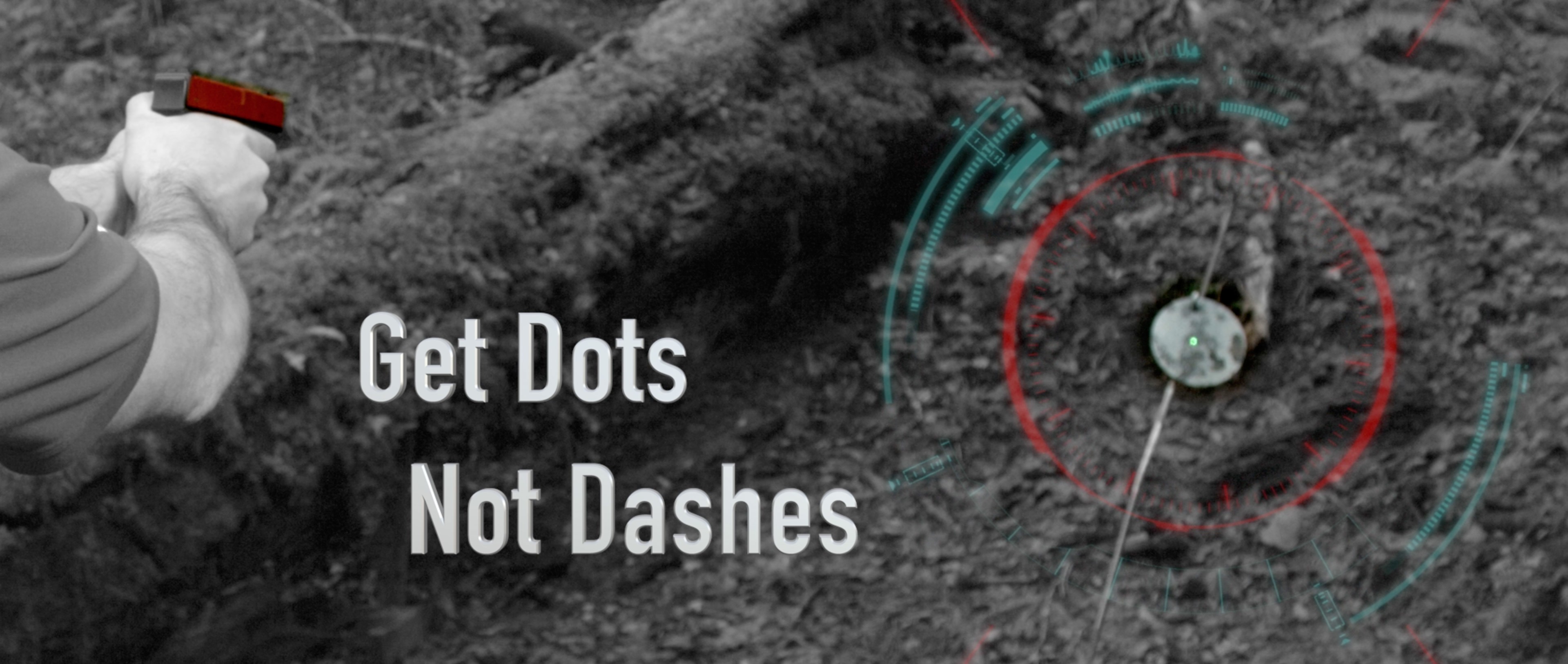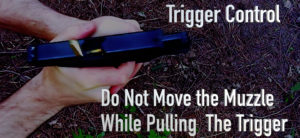
Isolate Grip Issues v. Trigger Control and Sight Alignment Issues

How do you know if you have a trigger mechanic issue versus a grip issue? The goal of trigger mechanics is to keep the muzzle on target while you’re breaking a shot. A good majority of shooters have trigger mechanic issues, in particular when rapidly pulling the trigger.

[op_liveeditor_element data-style=””][text_block style=”style_1.png” align=”left”]How do you know if you have a trigger mechanic issue versus a grip issue? The goal of trigger mechanics is to keep the muzzle on target while you’re breaking a shot. A good majority of shooters have trigger mechanic issues, in particular when rapidly pulling the trigger.
Often times our mechanics break down when time pressure is placed upon us. We must identify our break down and focus on remedying that particular break down. The usual suspects are: 1) grip, 2) trigger control and/or 3) sight (muzzle) alignment. The “and/0r” conjunction in the previous sentence throws an interesting twist…. sometimes we have a combination of deficiencies.[/text_block][/op_liveeditor_element]
[op_liveeditor_element data-style=””]
[/op_liveeditor_element]
[op_liveeditor_element data-style=””]
Why’d I Miss? The Usual Suspects….
[/op_liveeditor_element]
[op_liveeditor_element data-style=””]
Trigger Mechanics
Often times trigger control is blamed for low left shots (for a right handed shooter). Trigger control is the most likely suspect; however, we have reviewed high speed camera footage and found that a close second culprit for misses are grip issues.
Trigger control is simple, “don’t move the muzzle when breaking the shot.” However, mastery of trigger control is a refined skill requiring isolated training. Further, mastering trigger control under time pressure is even more challenging and a longer journey to mastery. We have more courses and material on trigger control at NextLevelTraining.com, but the important point is to isolate the issues by shooting strong hand only and use the SIRT to see if you are getting clean dots and not dashes.
Speed Issues
Do Not “Slow Down”. A common misguided remedy is to hear a shooting coach say, “You’re going to fast slow down.”
Crummy mechanics executed slower is not better. Poor mechanics executed more slowly is only reinforcing poor technique, masking the root cause and will betray you in deepest consequence when you need to act swiftly and decisively with your pistol.
Granted, there are times when you must time your body decelerations more appropriately, but simply going slower is not a coaching point, it is a myopic crutch that only has short sighted gains with long term problems. We have to diagnose the root cause why we missed and remedy that issue. Then we continue to hit the gas and work our mechanics at increasing speeds.
Sight/Muzzle Alignment
The muzzle (barrel of the pistol) should be aligned on target in the first shot (before there is any recoil and even before we pull the trigger). Sometimes shooters do not properly align the sights on target even before the first shot is fired. This issue is fairly simple to diagnose with a SIRT. Simply take one shot on target and observe the laser impact. Even with a front sight focus, the laser impact location can be seen even though it is blurry because you are focused on the front sight about 22″ in front of you. Shoot only one shot. If you shoot more than one shot for this diagnostic step, you will be tempted to “walk in the shots”. Walking in the shots is where you shift your focus from the front sight to the target and move the gun to the center of the target based on the previous laser hits. To remove this temptation, simply shoot one shot on target and see if the shot hit right behind your sight picture. For more information on sight alignment/sight picture see the training articles on this fundamental skill.
Grip Issues
Grip is often overlooked as the root cause for a large shot group. This course if focused on mechanics for establishing a grip and maintaining a grip throughout rapid consecutive shots. This series will go into much more detail on diagnosing grip issues such as porpoising, support hand slippage, rocking rearward, etc.
[/op_liveeditor_element]
[op_liveeditor_elements][/op_liveeditor_elements]

Training Information
[op_liveeditor_element data-style=””][text_block style=”undefined” align=”left”]Isolate Grip Issues v. Trigger Mechanic and Sight Alignment Issues: 12 of 17 Video Time: 1:21s Why’d I miss? Historically it is almost impossible to identify the root cause for poor accuracy. This video illustrates a clear path for remedying poor performance.[/text_block][/op_liveeditor_element]
[op_liveeditor_elements][/op_liveeditor_elements]

Next Up: High Speed Camera on Range


- All guns are always loaded. Treat the SIRT like a live fire gun.
- Never let the muzzle cover anything you are not willing to destroy.
- Keep your finger off the trigger until your sights are on the target.
- Be sure of your target and what is beyond it. Have a good ballistic backstop when training. So just in case some how a live fire gun got in your training space, a bullet will be caught where you are training.
[/text_block]



